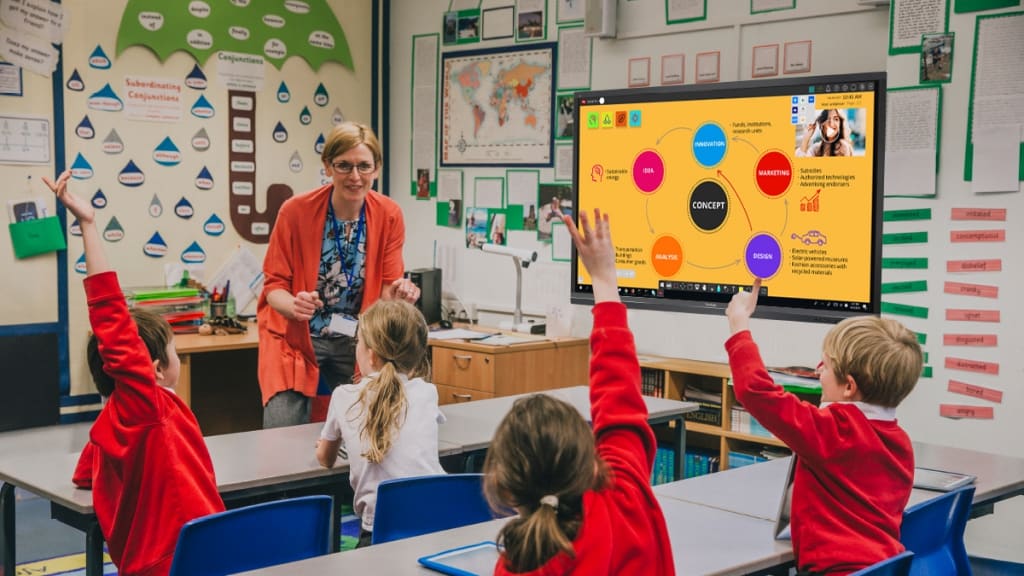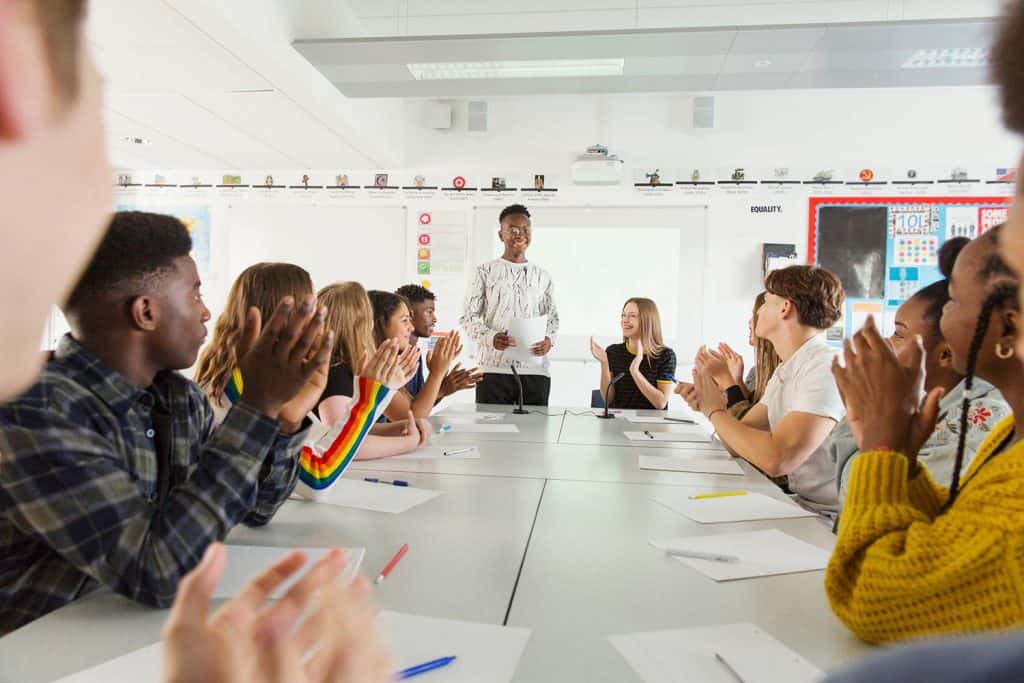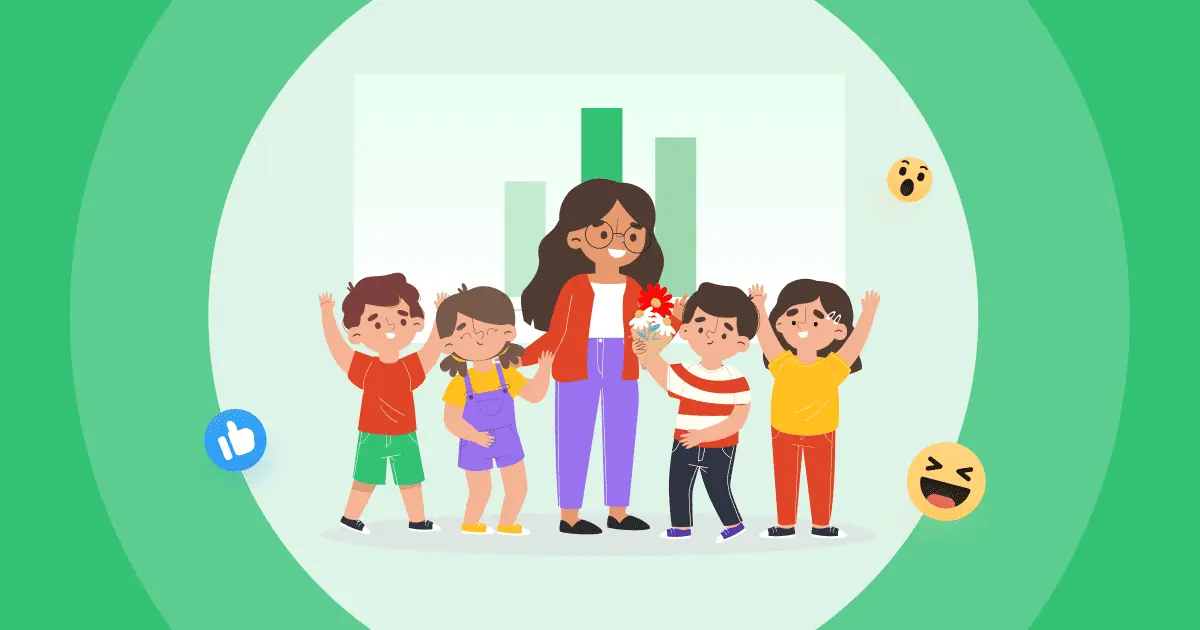We want to help you win the battle for your student’s attention so that you can be the best teacher possible and your students can learn everything they need. That's why AhaSlides created this guide to interactive classroom activities to use in 2025!
If a lesson doesn’t have a student’s attention, it isn’t going to be a practical lesson. Unfortunately, keeping students' attention in a generation raised on constant social media distractions and easily accessible video games is always a battle.
However, problems caused by technology can often be solved by technology. In other words, in the battle for your student’s attention, you fight fire with fire by bringing technology into the classroom.
There is still a place for old-school, analogue methods of student engagement too. Debates, discussions, and games have stood the test of time for a reason.
Table of Contents
- Benefits of Interactive Activities
- Choosing the Right Activity
- How to Make Your Class More Interactive
- Conclusion
More Tips for Classroom Management with AhaSlides

Start in seconds.
Get free education templates for your ultimate interactive classroom activities. Sign up for free and take what you want from the template library!
🚀 Get Free Templates☁️
The Benefits of Interactive Classroom Activities
The research is relatively straightforward on this point. Neuroimaging studies show that brain connections are made more easily when students are relaxed and comfortable. Joy and academic outcomes are connected; the dopamine released when students enjoy themselves activates the brain's memory centres.
When students are having interactive fun, they are more likely to invest in their learning.

Some teachers resist this idea. Fun and learning are antithetical, they assume. But in fact, the anxiety associated with strictly regimented learning and test preparation inhibits uptake of new information.
Not every lesson can or should be a barrel of laughs, but teachers can certainly integrate positive and interactive classroom activities into their educational methods to improve student outcomes.
How to Choose the Right Activity for Your Classroom
Every classroom is different and requires different classroom management strategies. You want to choose your classroom activities based on:
- age
- subject
- ability
- the personalities in your classroom (learn more about student personalities here)
Be aware that students are susceptible to their time being wasted. If they don’t see the point of the activity, they might resist it. That’s why the best two-way activities in the classroom have a practical learning objective and a fun element.
How to Make Your Class More Interactive👇
We have organised our list based on whether you aim to teach, test or engage your students. Of course, there is overlap in each category, and all are designed to improve learning outcomes in one way or another.
None of these activities requires digital tools, but almost all can be improved with the right software. We’ve written a whole article on the best digital tools for the classroom, which could be a great place to start if you're looking to upgrade your classroom for the digital age.
If you’re looking for a tool that can handle many of these activities in both in-person AND remote learning, AhaSlides was designed with teachers in mind. Our free software aims to engage students through a wide variety of interactive classroom activities, like polls, games and quizzes and offers an alternative to over-complicated learning management systems.

1. Interactive Activities for Learning
Role-Play
One of the most active interactive classroom activities is role-play, which helps students employ teamwork, creativity and leadership.
In many classrooms, this is a firm student favourite. Creating a mini play out of a given scenario, and bringing it to life as part of a group, can often be the most exciting thing about school.
Naturally, some quieter students tend to shy away from role play. No student should be forced into public activities they're not comfortable with, so try to find smaller or alternative roles for them to do.
Interactive Presentations
Listening is just one form of input. Presentations nowadays are two-way affairs, where presenters can ask questions across their slides and get responses from their audience for everyone to see.
Nowadays, plenty of modern classroom response systems make this super easy.
You may not think a few simple questions in your presentations will make a difference, but letting students put forward their opinions in polls, scale ratings, brainstorms, word clouds and more can do wonders for student engagement.

These presentations can take a little time to set-up. Still, the good news is that online presentation software such as AhaSlides makes it easier to create fantastic interactive presentations than ever before.
Jigsaw Learning
When you want your class to interact more with each other, use jigsaw learning.
Jigsaw learning is a fantastic way to split up the many parts of learning a new topic and assign each part to a different student. It works like this...
- All students are put into groups of 4 or 5, depending on how many parts the topic is split into.
- Each student in those groups receives learning resources for a different topic part.
- Each student goes to another group full of students who got the same topic.
- The new group learns their part together, using all the resources given.
- Each student then returns to their original group and teaches their topic part.
Giving each student this kind of ownership and responsibility can really see them thrive!
2. Interactive Activities for Testing
The best teachers don’t just deliver the same succession of lessons to every class every year. They teach, and then they observe, measure and adapt. A teacher has to pay attention to what material is sticking and what is bouncing right off their students' foreheads. Otherwise, how can they properly support when they need to?
Quizzes
The “pop quiz” is a popular classroom cliche for a reason. For one, it is a reminder of what has been learned recently, a recall of recent lessons — and, as we know, the more we recall a memory, the more likely it will stick.
A pop quiz is also fun… well, as long as the students get some of the answers. That is why designing your quizzes to the level of your classroom is essential.
For you as a teacher, a quiz is invaluable data because the results tell you what concepts have sunk in and what needs further elaboration before the end-of-year exams.
Some children, especially young ones who have only been in education for a few years, might feel anxiety due to quizzes because they are comparable to tests. So this activity might be best for children in Year 7 and up.
Need some help creating a quiz for your classroom from scratch? We’ve got you covered.
Student Presentations
Ask students to demonstrate their knowledge of a topic by presenting it to the class. This could take the form of a lecture, a slideshow, or a show-and-tell, depending on the subject and the age of the students.

You should take care when choosing this as a classroom activity because for some students standing in front of a class and putting their understanding of a topic under the harsh spotlight of their peers is akin to a nightmare. One option to mitigate this anxiety is to allow students to present in groups.
Many of us have memories of student presentations packed with cliche clip art animations or perhaps tedious slides overpacked with text. We may remember these PowerPoint presentations with fondness or not. Either way, it is easier and more fun than ever for students to create slideshows through their internet browser and present them in-person or, if needed, remotely.
3. Interactive Activities for Student Engagement
Debates
A student debate is a great way to reinforce information. Students looking for a practical reason to learn the material will find the motivation they are looking for, and everyone will get a chance to hear about the topic from various perspectives as listeners. It is also exciting as an event, and students will cheer on the side they agree with!
Classroom debates are best for students in the last years of primary school and older.
Participating in a debate can be nerve-wracking for some students, but one nice thing about a classroom debate is that not everybody has to speak. Usually, there are three group roles:
- Those supporting the notion
- Those opposing the notion
- Those judging the quality of the arguments presented
You can have more than one group for each of the above roles. For example, instead of having ten students in one huge group supporting the notion, you could have two smaller groups of five or even groups of three and four, and each group will have a time slot to present arguments.

The debating groups will all research the topic and discuss their arguments. One group member can do all the speaking, or each member can have their own turn. As you can see, you have a lot of flexibility in running a debate depending on the size of the class and how many students are comfortable with a speaking role.
As the teacher, you should decide the following:
- The topic for the debate
- The arrangements of the groups (how many groups, how many students in each, how many speakers in each group, etc.)
- The rules of the debate
- How long each group has to talk
- How the winner is decided (e.g. by popular vote of the non-debating group)
💡 If your students want more guidance on how to carry out their role in the debate, we’ve written a great resource on this: How to debate for beginners or debate games online.
Group Discussions (Including Book Clubs and other Groups)
Not every discussion needs to have the competitive aspect of a debate. For a more simple method of engaging students, try the live or virtual book club arrangement.
Whereas the debate activity described above has roles prescribed and rules to determine who speaks when in a book club, students have to show initiative to speak up. Some will not want to take this opportunity and will prefer to listen quietly. It’s okay for them to be shy, but as the teacher, you should try to give everyone who wants to speak a chance to do so, and even give some encouragement to quiet students.
The subject of the discussion does not have to be a book. That would make sense for an English class, but what about for other classes, such as science? Perhaps you could ask everyone to read a news article related to a recent scientific discovery, then open the discussion by asking the students what the consequences of this discovery might be.
A great way to start a discussion is using an interactive response system to “take the temperature” of the class. Did they enjoy the book? What words would they use to describe it? Students can submit their answers anonymously and the aggregate answers can be shown publicly in a word cloud or bar chart.
Group Discussions are also great ways to teach soft skills to students.
💡 Looking for more? We've got 12 best student engagement strategies!
Conclusion
Whenever you start to feel that your teaching routine is falling into a rut, you can break out any of the above ideas to shake things up and re-energise your class and yourself!
As you may have already noticed, many classroom activities are elevated with the right software. Making learning more fun for teachers and students alike is one of the critical goals of AhaSlides, our interactive presentation software.
If you’re ready to take your classroom engagement to the next level, click here and learn more about our free and premium plans for education professionals.
Engage with AhaSlides
- AhaSlides Online Poll Maker – Best Survey Tool
- Random Team Generator | 2025 Random Group Maker Reveals
- AhaSlides Spinner Wheel in 2025
Brainstorming better with AhaSlides
- 14 Best Tools for Brainstorming at School and Work in 2025
- Idea Board | Free Online Brainstorming Tool
- What is a Rating Scale? | Free Survey Scale Creator
- Host Free Live Q&A in 2025
- Asking Open-ended questions
- 12 Free survey tools in 2025
Frequently Asked Questions
What is interactive learning activities?
Interactive learning activities are lesson activities and techniques that actively engage students in the learning process through participation, experience, discussion and collaborative work.
What does interactive classroom mean?
An interactive classroom is one where learning is dynamic, collaborative and student-centred rather than passive. In an interactive setup, students are engaging with the material, each other and the teacher through activities like group discussions, hands-on projects, technology use and other experiential learning techniques.
Why are interactive classroom activities important?
Here are a few key reasons why interactive classroom activities are important:
1. They promote higher-order thinking skills like analysis, evaluation and problem-solving over rote memorisation as students discuss and interact with the material.
2. Interactive lessons appeal to different learning styles and keep more students engaged through kinesthetic/visual elements in addition to auditory.
3. Students gain soft skills like communication, teamwork and leadership from group activities that are valuable for their academic and professional careers.








